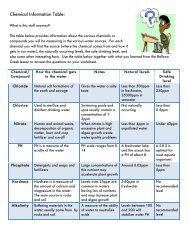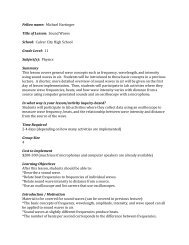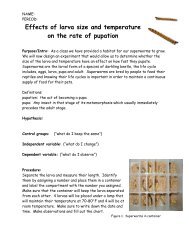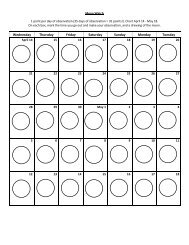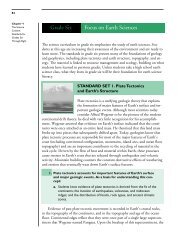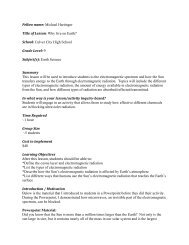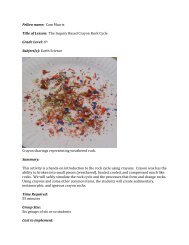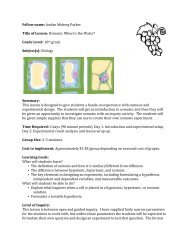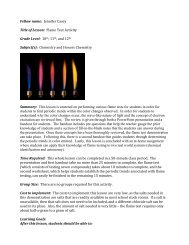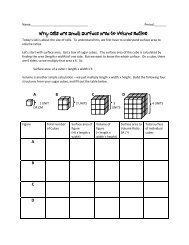Activity: What's the Story with Static Electricity? - UCLA
Activity: What's the Story with Static Electricity? - UCLA
Activity: What's the Story with Static Electricity? - UCLA
You also want an ePaper? Increase the reach of your titles
YUMPU automatically turns print PDFs into web optimized ePapers that Google loves.
Van der Graaff Generator.<br />
http://wpcontent.answers.com/wikipedia/commons/thumb/c/c2/Van_de_graaf_generator.svg/320<br />
px-Van_de_graaf_generator.svg.png<br />
Lesson Background & Concepts for Teachers<br />
Additional information:<br />
The following background information was obtained from:<br />
http://www.sciencemadesimple.com/static.html<br />
You walk across <strong>the</strong> rug, reach for <strong>the</strong> doorknob and..........ZAP!!! You get a static shock. Or,<br />
you come inside from <strong>the</strong> cold, pull off your hat and......BOING!!! <strong>Static</strong> hair - static electricity<br />
makes your hair stand straight out from your head. What is going on here? And why is static<br />
more of a problem in <strong>the</strong> winter?<br />
To understand static electricity, we have to learn a little bit about <strong>the</strong> nature of matter. Or in o<strong>the</strong>r<br />
words, what is all <strong>the</strong> stuff around us made of? Atoms.<br />
Everything we see is made up of tiny little parts called atoms. The atoms are made of even<br />
smaller parts. These are called protons, electrons and neutrons. They are very different from each<br />
o<strong>the</strong>r in many ways. One way <strong>the</strong>y are different is <strong>the</strong>ir "charge." Protons have a positive (+)<br />
charge. Electrons have a negative (-) charge. Neutrons have no charge.<br />
Usually, atoms have <strong>the</strong> same number of electrons and protons. Then <strong>the</strong> atom has no charge, it<br />
is "neutral." But if you rub things toge<strong>the</strong>r, electrons can move from one atom to ano<strong>the</strong>r. Some<br />
atoms get extra electrons. They have a negative charge. O<strong>the</strong>r atoms lose electrons. They have a<br />
positive charge. When charges are separated like this, it is called static electricity.<br />
If two things have different charges, <strong>the</strong>y attract, or pull towards each o<strong>the</strong>r. If two things have<br />
<strong>the</strong> same charge, <strong>the</strong>y repel, or push away from each o<strong>the</strong>r.



